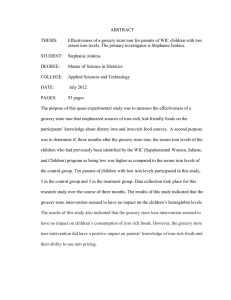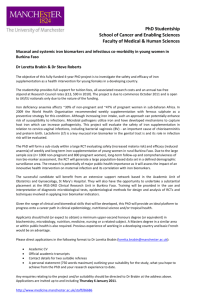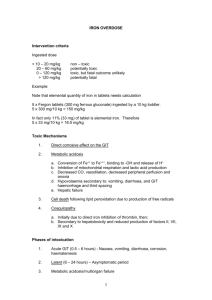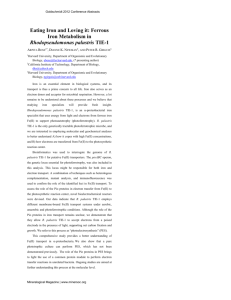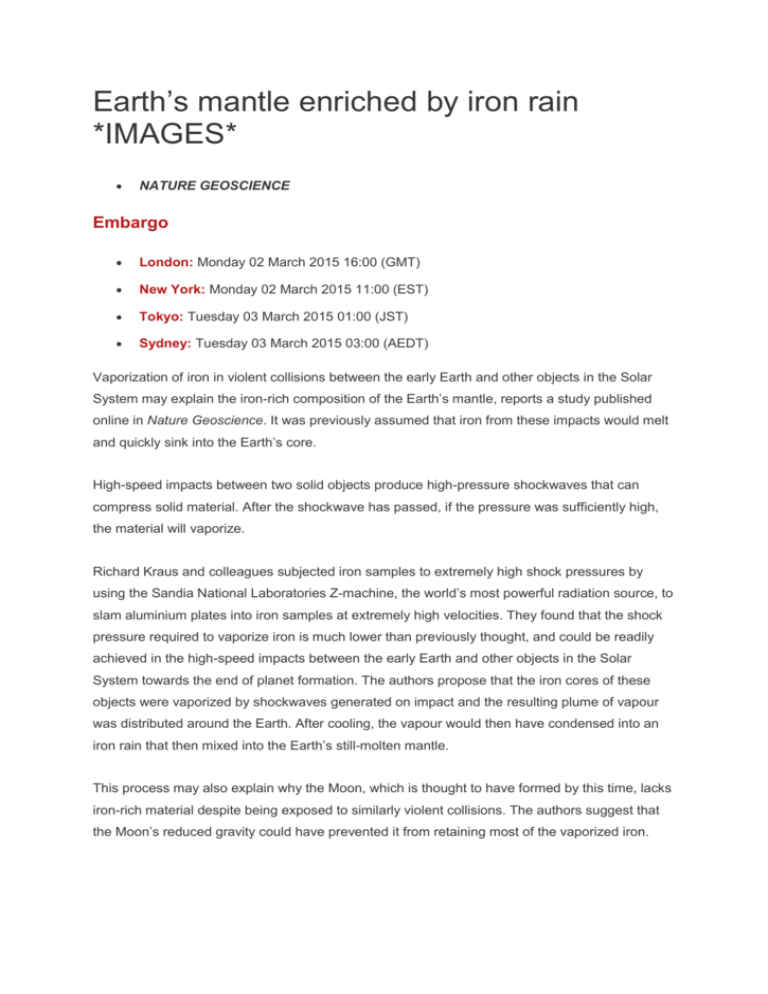
Earth’s mantle enriched by iron rain
*IMAGES*
NATURE GEOSCIENCE
Embargo
London: Monday 02 March 2015 16:00 (GMT)
New York: Monday 02 March 2015 11:00 (EST)
Tokyo: Tuesday 03 March 2015 01:00 (JST)
Sydney: Tuesday 03 March 2015 03:00 (AEDT)
Vaporization of iron in violent collisions between the early Earth and other objects in the Solar
System may explain the iron-rich composition of the Earth’s mantle, reports a study published
online in Nature Geoscience. It was previously assumed that iron from these impacts would melt
and quickly sink into the Earth’s core.
High-speed impacts between two solid objects produce high-pressure shockwaves that can
compress solid material. After the shockwave has passed, if the pressure was sufficiently high,
the material will vaporize.
Richard Kraus and colleagues subjected iron samples to extremely high shock pressures by
using the Sandia National Laboratories Z-machine, the world’s most powerful radiation source, to
slam aluminium plates into iron samples at extremely high velocities. They found that the shock
pressure required to vaporize iron is much lower than previously thought, and could be readily
achieved in the high-speed impacts between the early Earth and other objects in the Solar
System towards the end of planet formation. The authors propose that the iron cores of these
objects were vaporized by shockwaves generated on impact and the resulting plume of vapour
was distributed around the Earth. After cooling, the vapour would then have condensed into an
iron rain that then mixed into the Earth’s still-molten mantle.
This process may also explain why the Moon, which is thought to have formed by this time, lacks
iron-rich material despite being exposed to similarly violent collisions. The authors suggest that
the Moon’s reduced gravity could have prevented it from retaining most of the vaporized iron.
In an accompanying News and Views article, William Anderson writes that “the study
emphasizes the role that high-velocity impact processes played in the evolution of the Earth and
planets.”
Article and author details
1. Impact vaporization of planetesimal cores in the late stages of
planet formation
Corresponding Author
Richard Kraus (Lawrence Livermore National Laboratory, Livermore, CA, USA)
Email: kraus4@llnl.gov, Tel: +1 925 422 1454
News & Views Author
William Anderson (Los Alamos National Laboratory, NM, USA)
Email: wvanderson@lanl.gov, Tel: +1 505 667 5460
DOI
10.1038/ngeo2369
Online paper*
http://dx.doi.org/10.1038/ngeo2369
* Please link to the article in online versions of your report (the URL will go live after the embargo ends).
Image 1
Caption: The Z machine is roughly 100 feet across and is used to generate electric
currents of up to 20 million amps, which are fed into the target.
Caption: Randy Montoya
© 2015 Macmillan Publishers Limited. All Rights Reserved.partner of AGORA, HINARI, OARE, INASP, ORCID,
CrossRef and COUNTER









